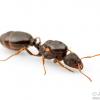Edited by Will230145, January 5 2019 - 8:27 PM.
- Formiculture.com
- Forums
- Gallery
- Members
- Member Map
- Chat

Edited by Will230145, January 5 2019 - 8:27 PM.
That's really awesome, where did you catch her? I've been looking for one myself.
Are you located in New York? And do you remember where?
I’m not sure all i know is nuptial flights are from April to AugustI have and I can't find any :-(. I did find a few camponotus Pennsylvanicus colonies but no novaeborancensisIs there a specific wood they prefer to be in?
Edited by Will230145, December 27 2018 - 8:05 PM.
Thank you

you can look under stones or in rotting logs but it might be hard.Ok, I just don’t know how to get a queen in winter
0 members, 1 guests, 0 anonymous users